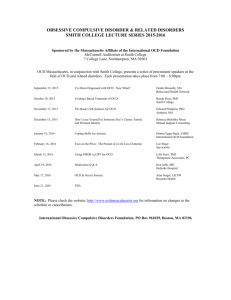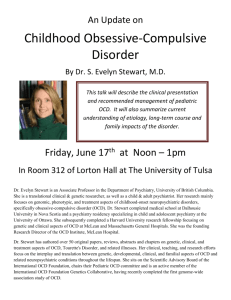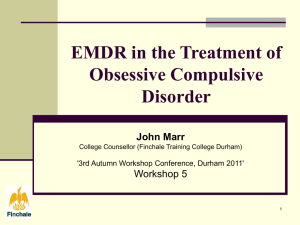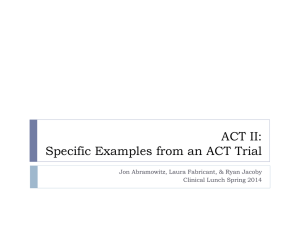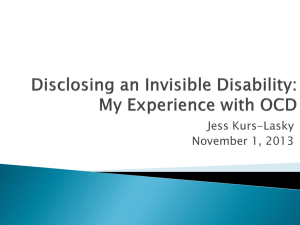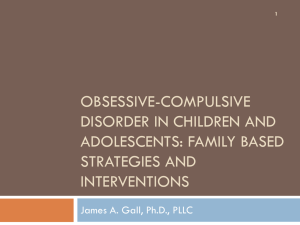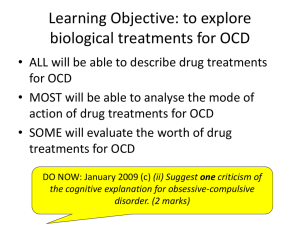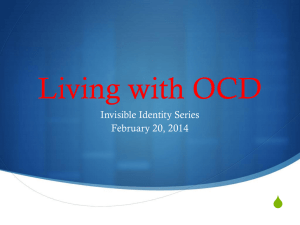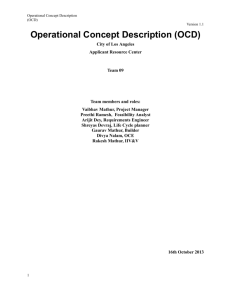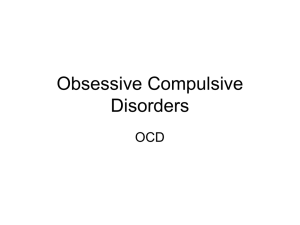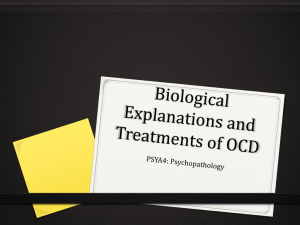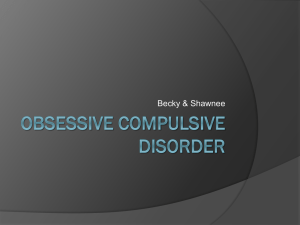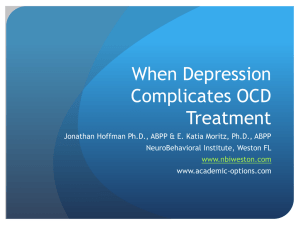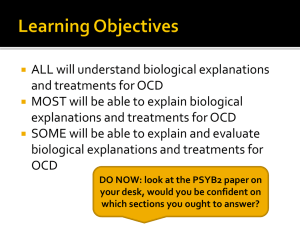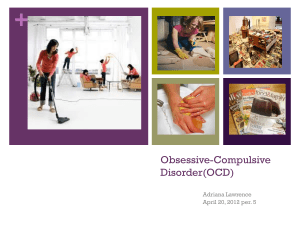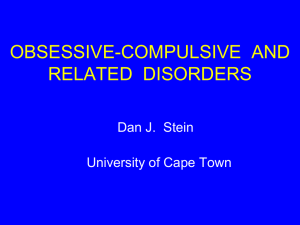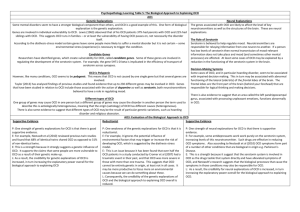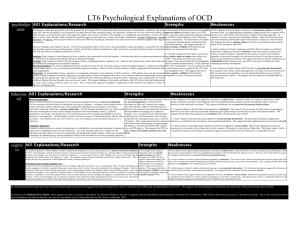- The University of North Carolina at Chapel Hill
advertisement
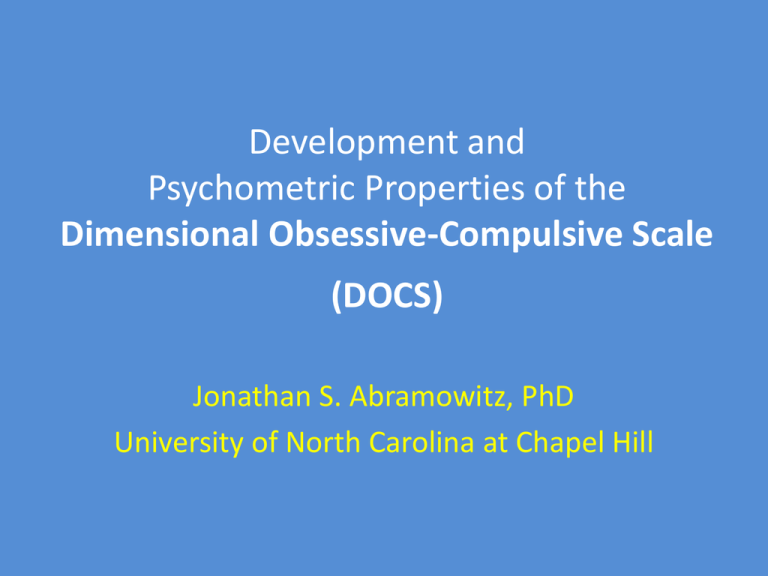
Development and Psychometric Properties of the Dimensional Obsessive-Compulsive Scale (DOCS) Jonathan S. Abramowitz, PhD University of North Carolina at Chapel Hill Collaborators • • • • • • Brett Deacon Bunmi Olatunji Michael Wheaton Noah Berman Diane Losardo Kiara Timpano • • • • • • Patrick McGrath Bradley Riemann Thomas Adams Throstur Bjorgvinsson Eric Storch Lisa Hale Assessment of OCD • OCD is heterogeneous • Challenges in assessing OCD symptoms – Measure a wide range of possible symptoms – Do so efficiency (as few items as possible) • Approaches – Assess only the quintessential obs. and comps. • PI/PI-R, OCI/OCI-R, MOCI – Assess the severity of the patient’s main symptoms • YBOCS/D-YBOCS Limitations of Existing OCD Measures • • • • • • Symptom severity is confounded with breadth Severity is confounded with popularity of sx One dimensional assessment of severity Obsessions assessed separately from rituals Avoidance? Hoarding? We Need New OCD Measures • Assess the severity of empirically supported symptom dimensions – Contamination, responsibility for harm/mistakes, Unacceptable thoughts, symmetry/incompleteness • Multiple severity parameters • Assess avoidance • Assess severity independent of type or range of symptoms • Easy to administer DOCS • Four sections (one for each symptom dimension) – Contamination, responsibility, unacceptable thoughts, symmetry/incompleteness • Each section contains – Examples of obsessions, compulsions, avoidance – Five severity questions (time, avoidance, distress, interference, control) rated 0 to 4 • 20 items in all Approximately 5-10 mins. to read and complete Study Aims • • • • Factor structure Reliability and Validity Diagnostic accuracy Treatment sensitivity Method • Participants (data collected at 8 sites) – 315 adults with OCD – 198 adults with other anxiety disorders (OAD) – 1,044 unselected undergraduate students • Measures Group DOCS OCI-R YBOCS BDI BAI DASS OCD X X X X X X OAD X X X X X Students X X X SIAS X Results: Exploratory Factor Analysis with Half of the Student Sample Results: Confirmatory Factor Analyses Goodness-of-fit index Group RMSEA SRMR TLI CFI Students .059 .042 .99 .96 OCD + OAD .089 .044 .99 .98 • Goodness-of-fit parameters indicated that the student and clinical data fit the four-factor structure very well. Correlations among factors showing weak to moderate relationships Reliability • Cronbach’s alpha and item-total correlation • Test-retest Convergent and Discriminant Validity: DOCS Total Score Convergent and Discriminant Validity: DOCS Factors/Subscales Known-Groups Validity Diagnostic Accuracy: ROC Analyses • DOCS total score discriminates: – OCD patients from nonclinicals (AUC = .86) – OCD patients from OAD patients (AUC = .77) • Cutoff scores – A score of 21 correctly classified 70% of OCD patients and 70% of OAD patients – A score of 18 correctly classified 78% of OCD patients and 78% of students Diagnostic Accuracy: DOCS vs. OCI-R OCD vs. Nonclinical Diff in AUC = .06; Z = 4.68, p < .01 OCD vs. OAD Diff in AUC = .08; Z = 3.57, p < .01 Sensitivity to Treatment Conclusions • The DOCS is a conceptually & psychometrically sound measure of OC symptoms in patients and nonpatients – Addresses many of the limitations of existing measures • Uses – Baseline assessment of symptom dimensions – Treatment response (use “main” symptom dimension) – Measure of psychopathology for research • Future work – Test-retest in a clinical (OCD) group – Child version – Translations

